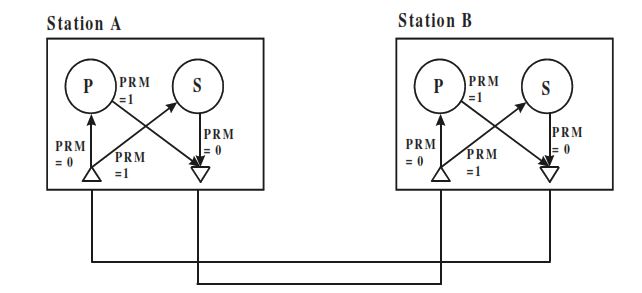In the realm of Supervisory Control and Data Acquisition (SCADA) systems, the IEC 60870-5 protocol suite is a fundamental standard for telecontrol and remote communication in power systems and industrial automation. One of the core technical distinctions within the IEC 60870-5-101 profile is between balanced and unbalanced transmission modes. These modes define how communication is initiated and managed between master (controlling) and slave (controlled) stations, directly impacting system design, performance, and reliability.
Table of Contents
Overview of IEC 60870-5-101
IEC 60870-5-101 (commonly referred to as T101) is a widely adopted protocol for basic telecontrol tasks over low-bandwidth, bit-serial communication links. It supports a hierarchical communication model suitable for geographically distributed systems. A key feature of the protocol is its dual support for balanced and unbalanced communication at the data link layer, allowing system designers flexibility depending on their application needs.
IEC 60870-5-101 Unbalanced Transmission: Simplicity and Scalability
Characteristics
In unbalanced transmission, communication is strictly controlled by the master station, which alone can initiate message transmissions by sending primary frames. Slave stations (outstations) can only respond when polled and are not allowed to send unsolicited messages.

Key Advantages
- No collision management required: Since slaves do not initiate communication, there is no risk of data collision on the link.
- Simplified slave implementation: The data link layer on the slave side is less complex.
- Supports multi-drop configurations: A single master can communicate with multiple slave devices, making it ideal for SCADA networks where central control and polling are predominant.
Use Case
Unbalanced transmission is most appropriate for multi-point networks, such as in power substations or remote monitoring systems, where periodic polling and control from a central master are sufficient.
IEC 60870-5-101 Balanced Transmission: Flexibility for Point-to-Point Links
Characteristics
Balanced transmission enables both stations in a point-to-point link to act as primary or secondary stations. Either station can initiate communication, allowing for peer-to-peer interactions.

Key Advantages
- Higher efficiency: Devices can transmit data as soon as it’s available without waiting for a poll.
- Supports unsolicited messages: Useful in systems where immediate updates (e.g., alarms, status changes) from remote units are required.
Limitations
- Limited to point-to-point links: Balanced mode is not applicable for multi-drop configurations due to the risk of collisions.
- Collision management required: Since both stations may transmit simultaneously, mechanisms must be implemented to detect and recover from collisions.
Use Case
Balanced transmission is ideal for dedicated communication links between two devices, such as between a central SCADA master and a sub-master or intelligent field device with local control functions.
Technical Implementation
Data Link Control Fields
Both balanced and unbalanced modes use specific control fields within the IEC 60870-5-101 frame structure to manage communication roles and responses. In unbalanced mode, function codes such as SEND-REQUEST and CONFIRM are used to ensure proper sequence and acknowledgment. In balanced mode, additional bits like the Direction (DIR) bit are included to distinguish the source of the transmission.
Frame Types
- Unbalanced:
- Suitable for multidrop configurations.
- Master uses
SEND/CONFIRMorREQUEST/RESPOND. - Slave replies with
CONFIRMor user data.
- Balanced:
- Only for point-to-point links.
- Either side may use
SEND/CONFIRMdirectly without polling. - Function codes are slightly modified to reflect symmetrical roles.
Curious about how DNP3 stacks up against IEC 60870-5-101 for SCADA communications?
Discover which protocol offers better performance, interoperability, and security —
Read our in-depth DNP3 vs IEC 60870 comparison here
Balanced and Unbalanced Transmission Procedures
Unbalanced Mode
- The master cyclically polls each slave for data using the
REQUEST/RESPONDservice. - Slaves can signal they have urgent (Class 1) data by setting the Access Demand (ACD) bit.
- Data flow control and message integrity are maintained through mechanisms like the Frame Count Bit (FCB) and Frame Count Valid (FCV) bit.
Balanced Mode
- Both stations run primary and secondary processes.
- Data is sent using
SEND/CONFIRMwithout polling. - There’s no need for ACD, but collision detection and recovery are essential.
Conclusion
The distinction between balanced and unbalanced transmission in IEC 60870-5-101 provides system designers with critical choices to align communication methods with network topologies and application demands.
- Unbalanced transmission is best suited for centralized control systems with multiple field devices and minimal real-time communication needs from slaves.
- Balanced transmission offers greater communication flexibility and efficiency but is constrained to simpler point-to-point scenarios.
Understanding these modes is vital for implementing robust and efficient SCADA communication networks, especially in critical infrastructure sectors like energy and utilities.
